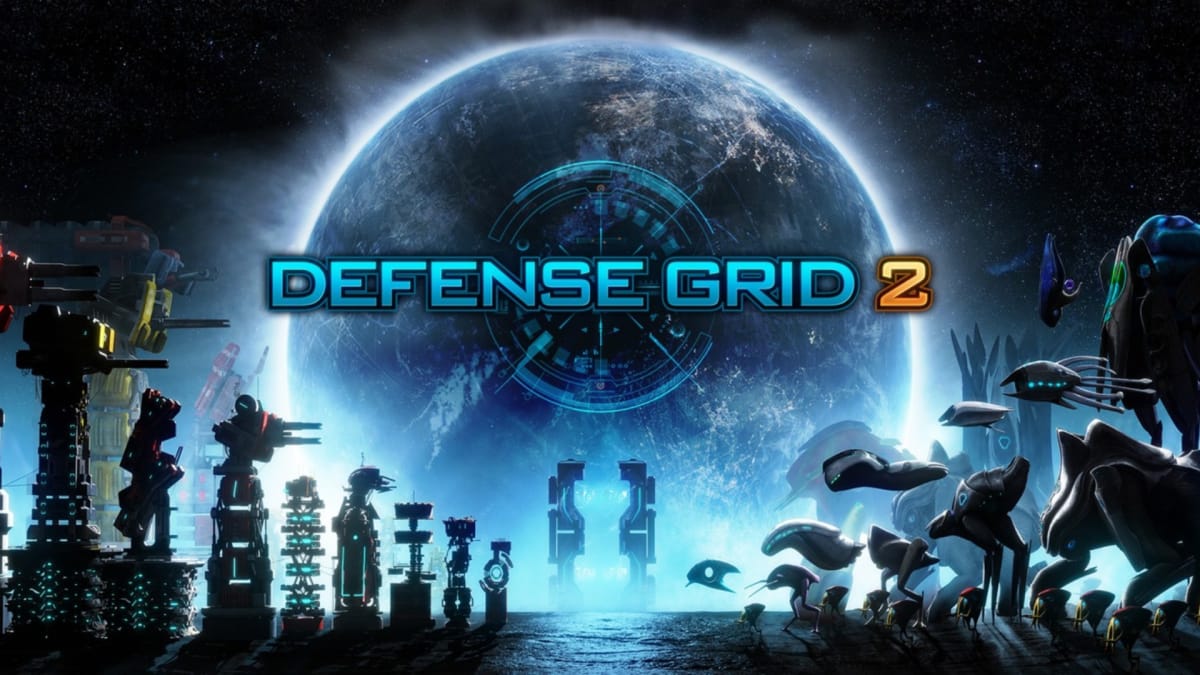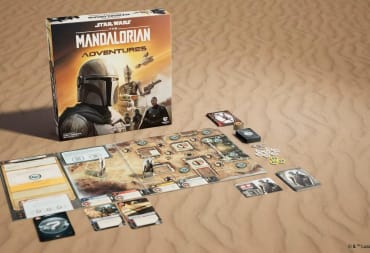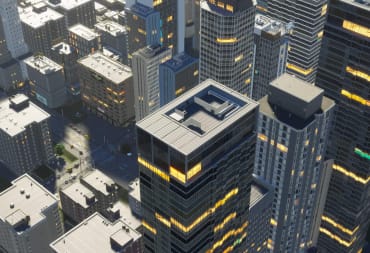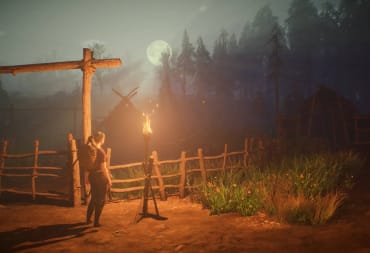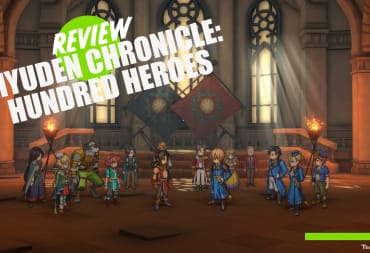One of the many voids in gaming at the moment is in the tower defense genre. Very few games in the genre are ever developed, and those that do are mediocre at best. That may be because while the concept of tower defense is incredibly simple, executing it well is very difficult. In its most basic form, tower defense is just groups of enemies running through a maze where the player has placed towers, damage dealing units to stop the enemies from reaching the end goal. Defense Grid 2 can be described in that way but with one modifier: it is the quintessential tower defense game.
Defense Grid 2 - Background
This is a sequel to the well-received Defense Grid, which before the existence of Defense Grid 2, one would likely refer to the original as the quintessential tower defense game. Defense Grid 2 came out of a successful Kickstarter two years ago. Hidden Path has definitely not been sitting around during that time, as it is apparent a lot of effort went into Defense Grid 2. It is here now, and before getting more in-depth, it is good, very good.
The first thing to mention is that for anyone that is new to the tower defense genre, Defense Grid 2 is the perfect game to learn all of the basic mechanics. All of the basic mechanics are there, and Defense Grid 2 eases you into them, like tower placement, tower types, mazing, enemy types, status effects, etc. Again, anyone that is interested in the genre should look to Defense Grid 2 as a great introduction.
Defense Grid 2 - Gameplay
For those not new to the genre, Defense Grid 2 has layers of complexity added to it as well. The first new addition that adds a lot to the game is the Boost tower. The Boost tower is a platform you can place a tower on, which will raise its elevation. The original Defense Grid played with the idea of line of sight some, but Defense Grid 2 makes it one of the key mechanics.
This presents a dilemma as the Boost tower has another function, which is to give a modification of some kind to the tower that is placed on it. That can come in the form of adding 25% damage to the tower or a few other ways like Disruption, which "disrupts" enemy shields and allows you to see "invisible" enemies easier. With that knowledge, your first instinct may be to make sure that every tower has a Boost platform to go with it. However, that is not the best idea.
You may notice in the center-right of the screenshot (click to enlarge) above that some towers are obviously taller than others. Those in the front are deliberately shorter than those in the back. If all of the towers were on Boost towers, then the line of sight for the back three would be hindered. Instead of being able to consistently attack, the back towers would then only have small windows to attack.
Defense Grid 2 - Levels
It gets much more complex as well, as you can see directly above, because there are many levels where the elevation varies dramatically, and choosing to use or not use a Boost tower becomes very important on whether a tower will be able to attack an enemy or not. That emphasis on such a simple and easy-to-miss mechanic greatly enhanced the experience of Defense Grid 2, as well as made it unique.
Much more was added to the game as well. Every tower has four different modifications that you unlock while playing the game. That can come in the form of reducing AoE but increasing damage, adding a slow effect, or putting damage over time attributes on enemies. There are 21 levels in the campaign, and every level has multiple modes to play, like endless waves, frozen core, where the cores you are protecting do not travel back to their housing, and many more. Another layer was added to that in that you can choose from four difficulty levels, as well as competitive modes which have certain handicaps like the inability to sell towers.
One of the major changes to the game is the lack of flying enemies. In most games, that adds an interesting dynamic as you have to then compensate for enemies that will go on a set path no matter what. Maybe that is something Hidden Path has planned to add in the future, as flying enemies were in the first game. Right now, though, the gameplay is varied enough with other emphases that it works out. Adding flying would disrupt the main emphasis on literal depth in the elevation of towers.
Defense Grid 2 - Multiplayer
There are two more features to mention. Defense Grid 2 adds multiplayer. This comes in the form of co-op, as well as competitive, where when you kill an enemy, it is sent to your opponent. It then becomes a race to see who can kill more enemies quicker.
The other thing to mention is the addition of a map maker with Steam Workshop support. Before, community maps for Defense Grid were few and far between because of the ridiculous effort that had to go into their creation. People had to submit a layout to Hidden Path so they could then finish the level with the assets and mechanics. Now, players can do it all on their own.
Oh, and those who like leaderboards will love Defense Grid 2. Every mode and combination has its own leaderboard you can try to get on to.
Defense Grid 2 - Story
Switching gears, the story is not near the quality of the gameplay, which is understandable. The story tries very hard to mix complexity, mystery, and humor all into one. The tone of the game seemed to be in flux for much of the game. Much of the writing emphasized humor, which did a serviceable job. Sometimes there were a few too many repeats of similar jokes, but they came across nonetheless. Smartly, much of the humor played directly into the overall story, which becomes more evident as the game progresses.
The story and universe created in Defense Grid 2 will interest some people. The concepts it introduces are not original, but the story is still not generic. If the story engages you, you will probably like it.
It might have been better if the story had been presented better, as much of it relies on the text at the beginning of a certain map. That is where the real meat of trying to figure out what is going on will be. Hidden Path squandered the characters they created and the reasonable voice actors, as much of what they said during a level was to set up/deliver the punchline of a joke. They could have put a lot more effort into the humor and dialogue than the story, and Defense Grid 2 would have benefited greatly from it. One of the reasons many liked the original Defense Grid was because of its charm. Some, though not all, seems to be lost here.
Defense Grid 2 - Graphics & Sound
Visually, Defense Grid 2 is mostly great with a few misses. Some of the design on the levels actually looks really neat with a nice aesthetic. A few are barren and/or full of one color or an array of too similar colors. The particle effects for the towers look very good in the game, however.
As for the audio, Defense Grid 2 sounds great. The quality of the sounds was great and they matched whatever it was they were doing. The voice acting suffered a bit at times, but it is by no means terrible. Usually, I am not much of a music person, but the soundtrack was enjoyable, at least to me. In some situations, it helped lend to the amount of action that would be coming your way.
The Verdict
Defense Grid 2 pushes what you can do to a tower defense game as far as possible and still have the game remain a tower defense game. In other words, there is not many features left to add to make it have all of the features a tower defense can have. At best, they can just add more variety to the existing features, like different towers, different modifications, and more enemies. I will end the way I began: Defense Grid 2 is the quintessential tower defense game. Defense Grid 2 is the defining example of the genre.
TechRaptor reviewed Defense Grid 2 on PC via Steam with a code provided by the developer. It is also available on Nintendo Switch. This review was originally published on 09-23-2014. While care has been taken to update the piece to reflect our modern style guidelines, some of the information may be out of date. We've left pieces like this as they were to reflect the original authors' opinions, and for historical context.
Review Summary
Have a tip, or want to point out something we missed? Leave a Comment or e-mail us at tips@techraptor.net
